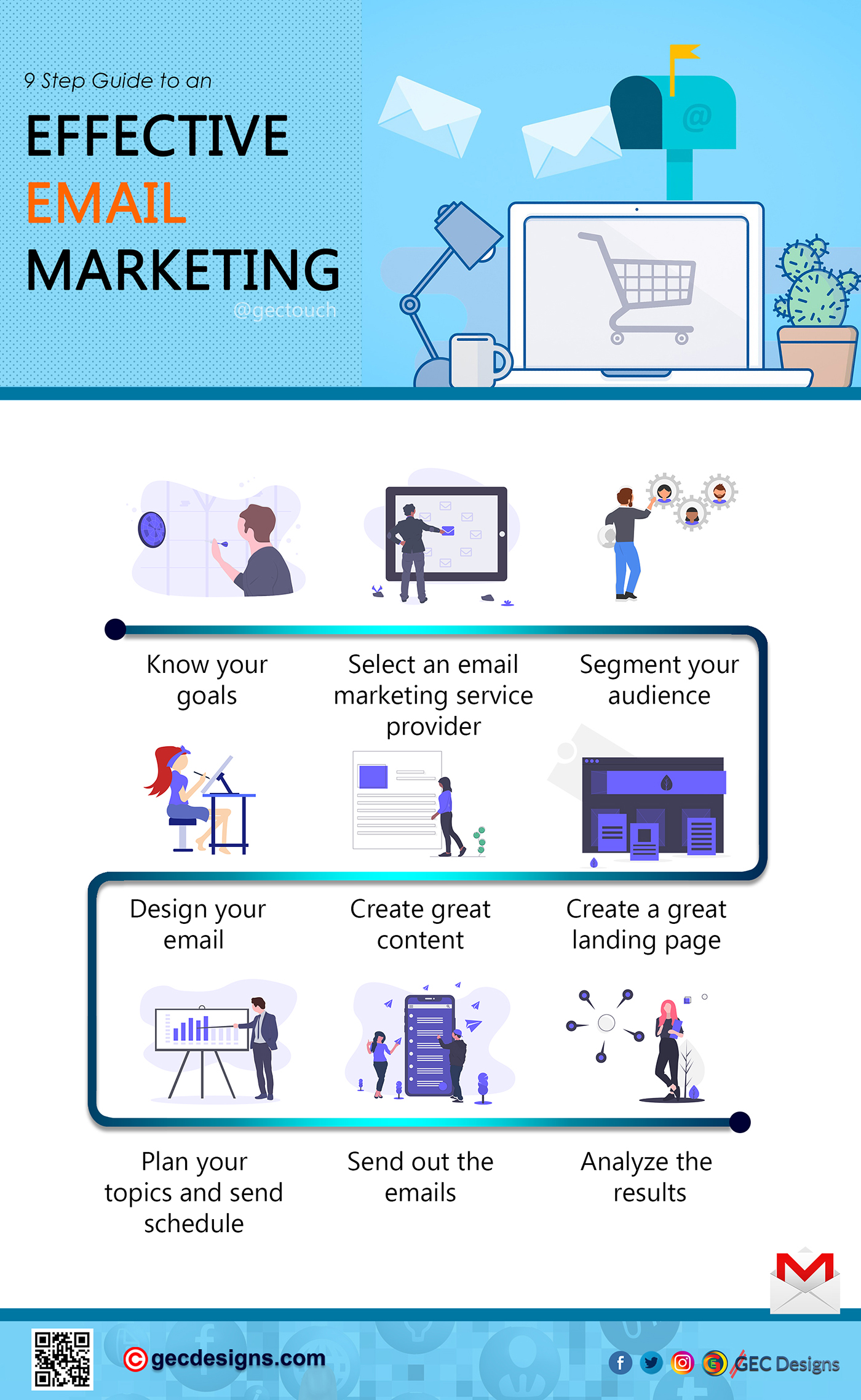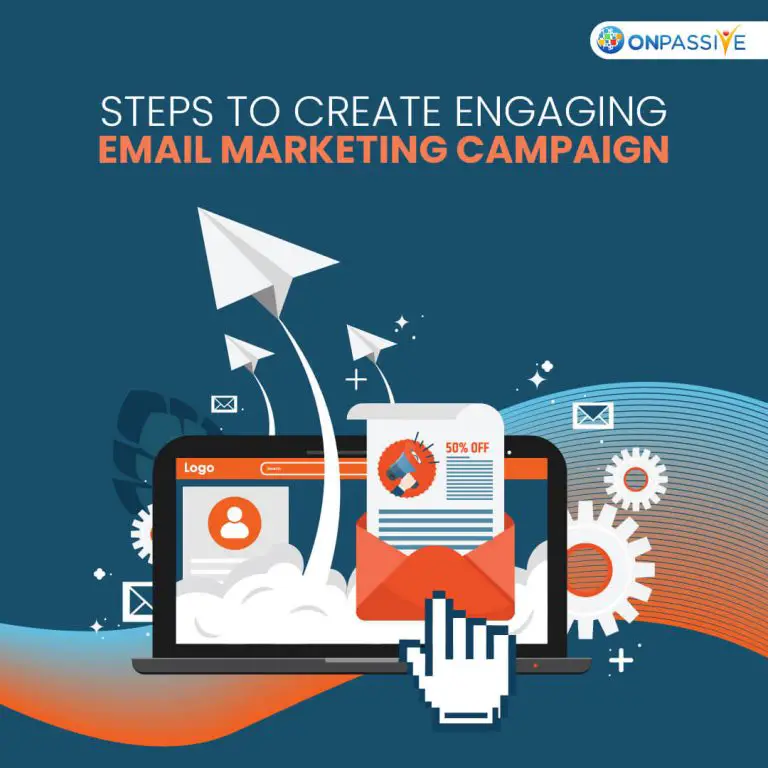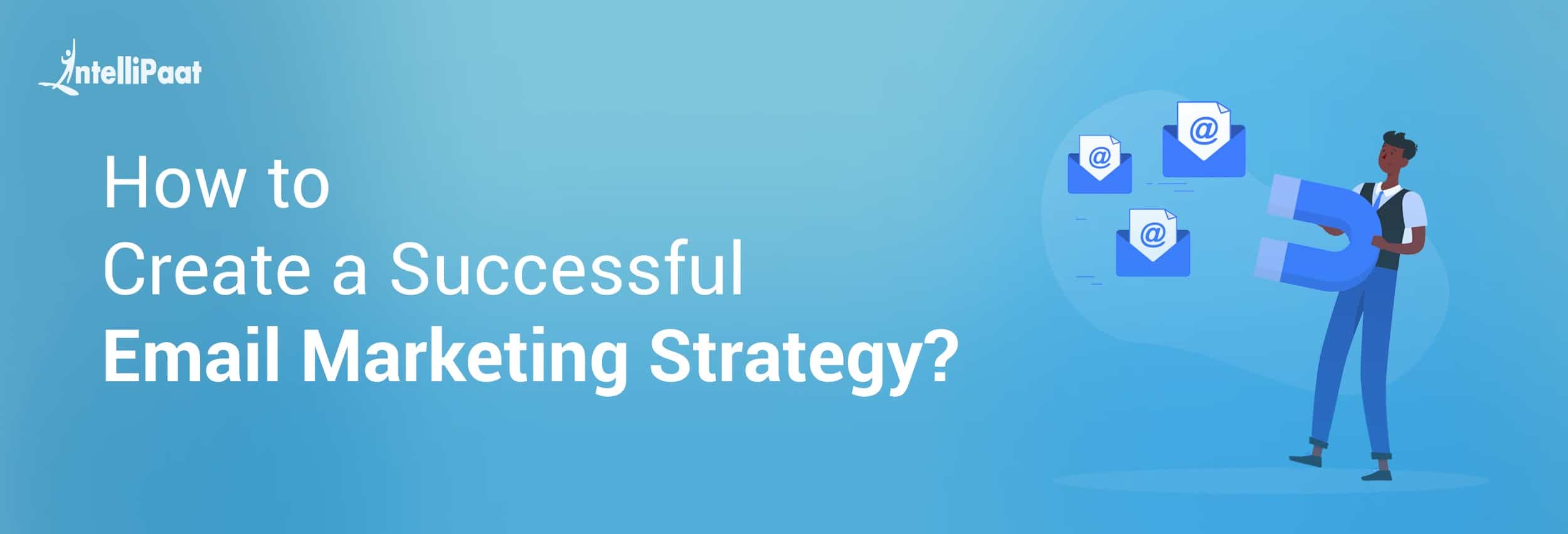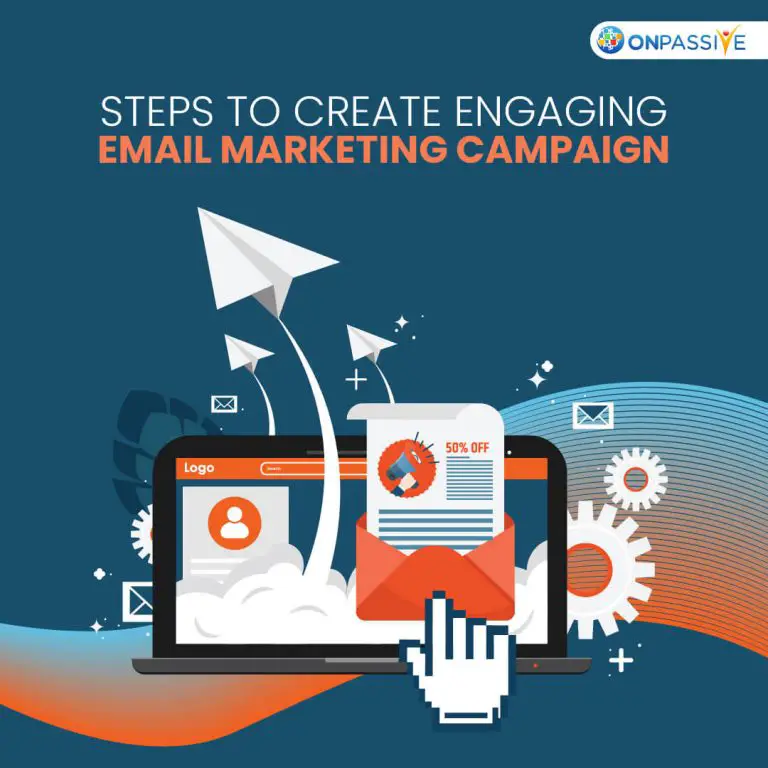So you’re looking to amp up your blog’s reach and engagement through email marketing? Look no further! In this article, we’ll explore the ins and outs of creating a successful email marketing campaign specifically tailored for your blog’s audience. From building a robust subscriber list to crafting compelling content, we’ve got you covered with all the tips and tricks you need to take your blog to new heights. Get ready to connect with your readers on a whole new level and watch your blog thrive with the power of email marketing!

This image is property of gecdesigns.com.
Defining the Goals of Your Email Marketing Campaign
When embarking on an email marketing campaign, it is crucial to clearly define your goals and objectives. By identifying what you hope to achieve, you can effectively plan and execute your campaign. One of the first steps in defining your goals is to identify your target audience. Understanding who your audience is will allow you to tailor your messages and create content that resonates with them. Consider factors such as demographics, interests, and behaviors when determining your target audience.
Once you have identified your target audience, the next step is to set measurable goals. These goals should be specific, measurable, achievable, relevant, and time-bound (SMART goals). For example, you may want to increase your email subscribers by 20% within six months or boost your click-through rate by 10% in the next quarter. Setting goals will not only give you something to work towards, but it will also provide benchmarks against which you can measure the success of your campaign.
In order to track the progress and effectiveness of your email marketing campaign, it is important to choose appropriate metrics to measure. Some common metrics to consider include open rates, click-through rates, conversion rates, unsubscribe rates, and revenue generated. These metrics will provide valuable insights into how well your emails are performing and whether they are achieving the desired outcomes. By regularly monitoring these metrics, you can make data-driven decisions and make adjustments to optimize your results.
To ensure that your email marketing campaign runs smoothly and efficiently, it is essential to develop a timeline. This timeline should outline the key milestones, deadlines, and tasks that need to be completed throughout the duration of your campaign. By having a clear timeline, you can stay organized and ensure that all aspects of your campaign are executed in a timely manner. It is also helpful to assign responsibilities to different team members or departments to ensure accountability and effective collaboration.
Building Your Email List
Building a strong and engaged email list is crucial for the success of your email marketing campaign. Here are some effective strategies to help you grow your email list:
Implement email opt-in forms on your blog: Placing opt-in forms strategically on your blog will make it easy for visitors to subscribe to your email list. Consider placing forms in prominent locations such as the sidebar, footer, or at the end of blog posts. You can also experiment with different types of opt-in forms such as pop-ups, slide-ins, or inline forms.
Offer valuable incentives to encourage subscriptions: People are more likely to subscribe to your email list if they receive something of value in return. Offer incentives such as exclusive content, discounts, or freebies in exchange for subscribing. Make sure to clearly communicate the benefits of subscribing to entice your audience.
Utilize social media to promote your email list: Leverage your social media platforms to drive traffic to your email opt-in forms. Create compelling posts that highlight the benefits of subscribing to your email list and include a link to your opt-in form. You can also consider running social media contests or giveaways that require participants to subscribe to your email list.
Partner with other bloggers for cross-promotion: Collaborating with other bloggers in your niche can help you reach a wider audience and gain exposure. Consider guest blogging on other websites and include a call-to-action in your guest posts that directs readers to subscribe to your email list. You can also partner with other bloggers for cross-promotion where you promote each other’s email lists to your respective audiences.
By implementing these strategies, you can steadily grow your email list and ensure that you have a pool of engaged and interested subscribers to connect with through your email marketing campaign.

This image is property of www.emailmanager.com.
Designing Compelling Email Templates
Designing visually appealing and compelling email templates is essential for capturing the attention of your subscribers and encouraging them to take action. Here are some tips to help you create effective email templates:
Choose a suitable email marketing platform: There are various email marketing platforms available that offer customizable templates and user-friendly interfaces. Consider your budget, desired features, and ease of use when selecting a platform. Look for platforms that offer a wide range of templates and allow for customization to ensure your emails reflect your brand identity.
Use a responsive design for mobile optimization: With the majority of people now accessing emails on their mobile devices, it is crucial that your email templates are optimized for mobile viewing. Choose a responsive design that automatically adjusts the layout and formatting of your emails to fit different screen sizes. This will ensure that your emails are easy to read and navigate on all devices.
Create a visually appealing layout: A well-designed email template should be visually appealing and aligned with your brand. Use consistent branding elements such as logos, colors, and fonts to maintain a cohesive and professional look. Incorporate eye-catching visuals like images or graphics to enhance the visual appeal of your emails. However, ensure that the visuals are optimized for quick loading times and do not distract from the main message.
Include a clear call-to-action (CTA): Every email should have a clear and compelling call-to-action that prompts your subscribers to take the desired action. Whether it is to visit your blog, make a purchase, or sign up for an event, make sure that your CTA stands out and is easy to click. Use action-oriented language and create a sense of urgency to motivate your subscribers to act.
By following these design principles, you can create email templates that not only look visually appealing but also effectively convey your message and drive engagement.
Crafting Engaging Email Content
The content of your emails is what ultimately determines whether your subscribers will engage with your emails or simply hit the delete button. Here are some strategies to craft engaging and impactful email content:
Personalize your emails for better engagement: Personalization is key to making your subscribers feel valued and to improve engagement. Use merge tags to address your subscribers by their name and segment your email list to create targeted content. Tailor your emails to the interests and preferences of different segments to ensure that each subscriber receives relevant and personalized content.
Write compelling subject lines: The subject line is the first thing your subscribers see when they receive an email from you. A compelling subject line can make the difference between your email being opened or ignored. Use language that sparks curiosity, creates urgency, or offers a benefit to entice your subscribers to open your emails. However, make sure to avoid misleading or spammy subject lines as this can harm your sender reputation.
Segment your email list for targeted content: Segmenting your email list allows you to create more relevant and tailored content for your subscribers. Consider factors such as demographics, past purchases, or engagement levels when segmenting your list. By sending targeted content, you can increase the chances of your subscribers finding value in your emails and taking the desired action.
Provide valuable and educational content: Your emails should go beyond simple promotional messages and provide value to your subscribers. Offer educational content, industry insights, or tips and tricks that align with your audience’s interests. By positioning yourself as a trusted source of valuable information, you can build credibility and trust with your subscribers.
By crafting engaging email content, you can drive higher open rates, click-through rates, and conversions, resulting in a more successful email marketing campaign.

This image is property of www1.onpassive.com.
Implementing Effective Email Automation
Email automation allows you to streamline your email marketing efforts while still delivering personalized and timely messages to your subscribers. Here are some ways to implement effective email automation:
Set up welcome emails for new subscribers: Welcome emails are the perfect opportunity to make a great first impression and establish a connection with your new subscribers. Set up automated welcome emails that are triggered when someone joins your email list. Use these emails to introduce yourself, provide valuable resources, and set expectations for what your subscribers can expect from your future emails.
Send regular newsletters with blog updates: Keep your subscribers informed and engaged by sending regular newsletters that highlight your latest blog posts, news, or updates. Create a consistent schedule for sending newsletters, whether it is weekly, bi-weekly, or monthly. Use automation tools to streamline the process of gathering blog content and automatically populate your newsletters.
Create automated email workflows based on user actions: Automation workflows allow you to send targeted and personalized emails based on specific actions or behaviors of your subscribers. For example, if a subscriber clicks on a certain link in one of your emails, you can automatically trigger a follow-up email with related content or a special offer. This type of automation helps you deliver the right message at the right time, increasing engagement and conversions.
Offer personalized recommendations: Leverage the data you have about your subscribers to provide personalized product or content recommendations. Use automation to trigger emails with recommendations based on factors such as past purchases, browsing history, or preferences. By offering tailored recommendations, you can increase the relevance and value of your emails, leading to higher engagement and conversions.
By implementing effective email automation, you can deliver timely and personalized messages to your subscribers, increasing engagement and conversions while saving time and effort.
Optimizing Email Deliverability and Open Rates
Even if you have compelling email content, it will be ineffective if your emails are not being delivered to your subscribers’ inboxes or if they are not being opened. Here are some strategies to optimize email deliverability and open rates:
Clean and regularly update your email list: Over time, email lists can become outdated with invalid or inactive email addresses. Regularly clean your email list by removing bounced email addresses and removing subscribers who have not engaged with your emails for a long period of time. Use email verification services or tools to identify and remove invalid email addresses.
Avoid using spam trigger words and phrases: Certain words and phrases in your subject lines and email content can trigger spam filters and harm your email deliverability. Avoid using excessive capitalization, excessive use of exclamation marks, or words commonly associated with spam emails. Instead, focus on providing valuable and relevant content that encourages engagement.
Optimize for different email clients and devices: Your subscribers may be using a variety of email clients and devices to read their emails. Make sure your emails are optimized to display correctly across different email clients and devices, including desktop, mobile, and webmail clients. Test your emails across various platforms to ensure a consistent and user-friendly experience.
Experiment with different sending frequencies: Finding the right balance between staying top-of-mind and avoiding becoming a nuisance can be challenging. Experiment with different sending frequencies to see what works best for your audience. Some subscribers may prefer more frequent emails, while others may prefer less frequent ones. Monitor your email metrics to determine the optimal sending frequency that maximizes engagement and minimizes unsubscribes.
By optimizing email deliverability and open rates, you can increase the visibility and reach of your emails, ensuring that your content is seen and engaged with by your subscribers.

This image is property of intellipaat.com.
A/B Testing and Analyzing Email Campaign Performance
To continually improve the effectiveness of your email marketing campaign, it is important to conduct A/B testing and analyze its performance. Here are some strategies:
Split test subject lines and email elements: A/B testing involves creating two versions of an email and testing different elements to see which performs better. Start by testing subject lines to determine the most effective ones for your audience. You can also test different email templates, call-to-action buttons, or content formats. Analyze the results and make data-driven decisions to optimize your emails.
Analyze open rates, click-through rates, and conversion metrics: Regularly analyze key email metrics such as open rates, click-through rates, and conversion rates. These metrics provide insights into how well your emails are resonating with your audience and driving the desired actions. Look for patterns or trends in the data to identify areas for improvement.
Track email performance over time: It is important to track the performance of your email marketing campaign over time to identify long-term trends and patterns. This can help you understand how your emails are performing in different seasons or during specific promotions. Use this data to make informed decisions and adjust your strategies accordingly.
Make data-driven improvements to optimize results: Based on the insights gained from A/B testing and analyzing email performance, make data-driven improvements to your email marketing strategy. Continuously refine your subject lines, content, and design to align with what resonates best with your audience. Implement the learnings from your analysis to optimize your future campaigns and achieve better results.
By regularly testing and analyzing your email marketing campaign, you can make informed decisions and improve the effectiveness of your emails, ultimately driving better engagement and conversions.
Nurturing and Retaining Subscribers
Retaining subscribers is just as important as acquiring new ones. Here are some strategies to nurture and retain your subscribers:
Provide exclusive content and offers: Reward your subscribers with exclusive content, offers, or discounts that are only available to your email list. This incentivizes subscribers to stay subscribed and reinforces the value of being part of your email community. Consider offering sneak peeks, behind-the-scenes content, or early access to new products or services.
Create a sense of community through email: Foster a sense of community and belonging among your subscribers by creating opportunities for engagement and interaction. Ask for feedback, host Q&A sessions, or encourage subscribers to share their own stories or experiences related to your blog content. Make your subscribers feel like valued members of a community rather than just recipients of your emails.
Regularly engage with your subscribers: Make an effort to engage with your subscribers on a regular basis. Reply to their emails, respond to comments on your blog, or ask for their opinions and feedback. By being responsive and showing genuine interest, you can strengthen the relationship with your subscribers and build loyalty.
Implement a re-engagement campaign for inactive subscribers: If you have subscribers who have not engaged with your emails for an extended period of time, consider implementing a re-engagement campaign. Send targeted emails to these subscribers with enticing offers or content to reignite their interest. If they still do not engage, consider removing them from your email list to maintain a healthy subscriber base.
By nurturing and retaining your subscribers, you can build a loyal and engaged audience that continues to support and interact with your blog over the long term.

This image is property of media.sproutsocial.com.
Ensuring Compliance with Email Marketing Laws and Regulations
When conducting an email marketing campaign, it is crucial to ensure compliance with relevant email marketing laws and regulations. Here are some key considerations:
Familiarize yourself with relevant laws and regulations: Research and understand the email marketing laws and regulations in your jurisdiction. Familiarize yourself with laws such as the CAN-SPAM Act in the United States or the General Data Protection Regulation (GDPR) in the European Union. Ensure that you comply with requirements related to consent, data protection, and unsubscribe options.
Include a clear unsubscribe option in your emails: Every email you send must include a clear and prominent unsubscribe option. Make it easy for subscribers to opt out of receiving emails from you and honor their requests promptly. Failure to provide an unsubscribe option or ignoring unsubscribe requests can lead to legal consequences and harm your reputation.
Obtain explicit consent for collecting and using personal data: Ensure that you have obtained explicit consent from your subscribers before collecting and using their personal data. Clearly communicate how their data will be used and give them the option to opt in or out of specific data collection purposes.
Regularly review and update your privacy policy: Your privacy policy should clearly outline how you collect, use, and protect your subscribers’ personal data. Regularly review and update your privacy policy to ensure that it accurately reflects your data practices and complies with applicable laws. Make your privacy policy easily accessible to your subscribers.
By ensuring compliance with email marketing laws and regulations, you can protect the privacy and rights of your subscribers and maintain a positive reputation for your blog.
Monitoring and Continuous Improvement
Monitoring the performance of your email marketing campaign and continuously improving your strategies are essential for long-term success. Here are some strategies to consider:
Monitor key email marketing metrics: Regularly track and monitor key email marketing metrics to evaluate the performance of your campaign. Set up tracking and analytics tools to collect data on open rates, click-through rates, conversion rates, and other relevant metrics. Use this data to identify areas of improvement and make data-driven decisions.
Collect and analyze customer feedback: Actively seek feedback from your subscribers to understand their needs, preferences, and pain points. Surveys, feedback forms, or simply encouraging open communication can help you gain valuable insights. Analyze the feedback you receive and use it to improve your email content, design, or overall strategy.
Stay updated on industry trends and best practices: The world of email marketing is constantly evolving, with new trends, technologies, and strategies emerging. Stay informed about the latest industry trends and best practices by reading industry blogs, attending webinars, or participating in relevant forums or communities. By staying up-to-date, you can adapt your strategies to remain relevant and effective.
Iterate and optimize your email marketing strategy: Based on the insights gained from monitoring and customer feedback, iterate and optimize your email marketing strategy. Experiment with new ideas, test different approaches, and refine your strategies over time. Continuously evaluate the performance of your campaigns and make adjustments to improve results.
By embracing a culture of monitoring and continuous improvement, you can ensure that your email marketing campaign remains effective and aligned with the evolving needs and preferences of your audience.
In conclusion, creating a successful email marketing campaign for your blog requires careful planning, effective strategies, and continuous improvement. By defining clear goals, building a strong email list, designing compelling templates, crafting engaging content, implementing automation, optimizing deliverability and open rates, testing and analyzing, nurturing and retaining subscribers, ensuring compliance, and monitoring and continuously improving, you can maximize the impact of your email marketing efforts and achieve your desired outcomes.


